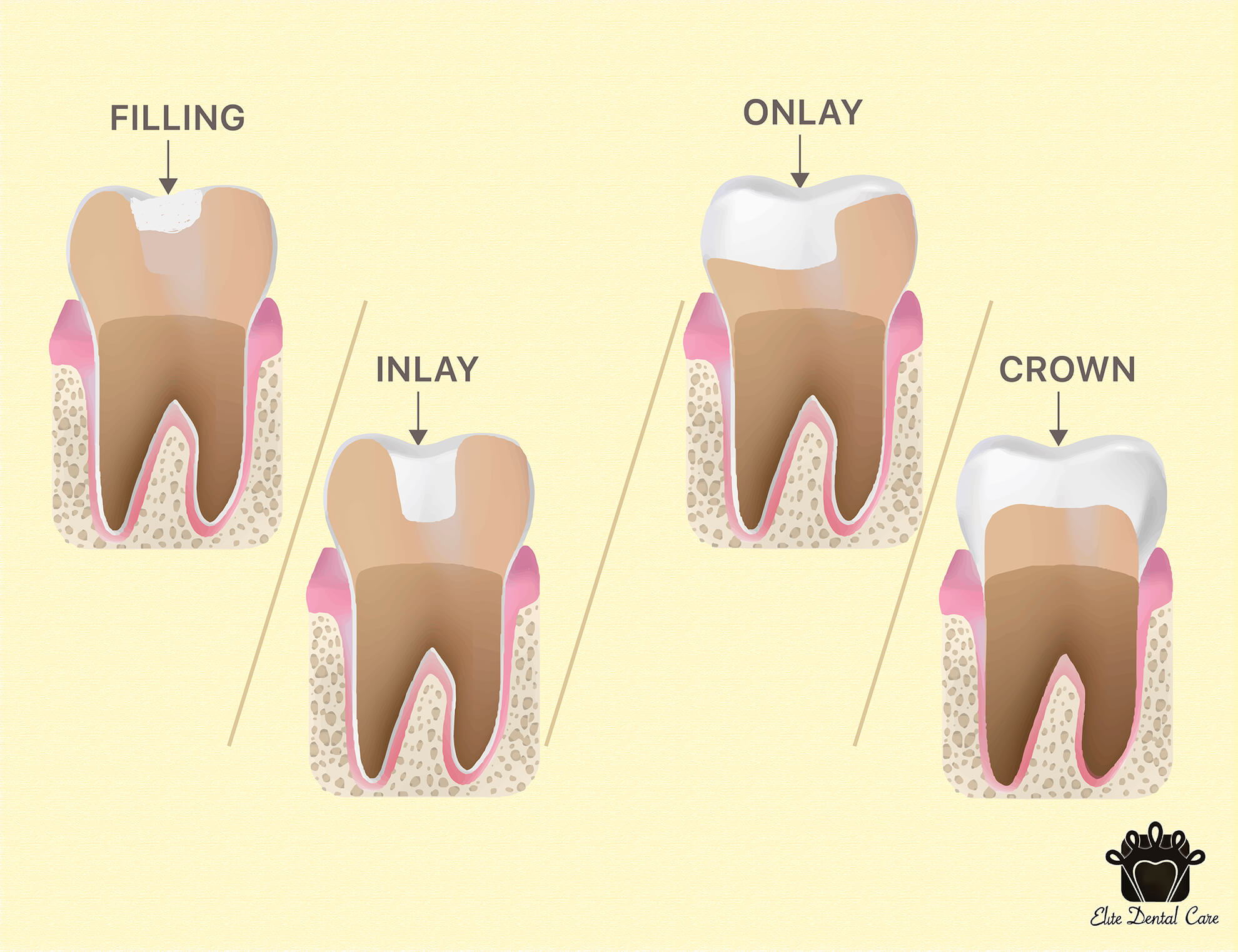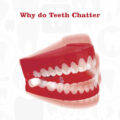
Uncategorized
edental
13 June 2020
Fillings VS Inlay/Onlay VS Crown – Elite Dental Care Tracy
Have you got cavities in your teeth? Has your dentist advised you to drill out the cavity part from your teeth?
Worried about your appearance with the drilled shapeless teeth?
Folks!! Don’t you worry about it?
We have “the best solutions” gifted by Technology to dentistry, to fill the carved teeth, satisfy our aesthetic demands, avoids further complications, and provide proper oral care.
As soon as you get the cavity part of your teeth drilled, consult your dentist for filling and get back the shape of the teeth.
Your dentist would suggest you few options to shape your teeth those options would be
- Filling
- Dental Inlays and Outlays
- Crown
These are the indirect dental restorations that give shape to your teeth. Doctors will examine the tooth and suggest the appropriate dental restoration to their patients.
A brief about the dental restorations:
- Fillings:
Fillings replace the missing teeth or the drilled out part of the tooth affected by cavities.
A dental filling uses durable restorative materials like ceramic composite or metals.
Fillings are two types:
- Composite tooth-coloured filling:
The colour of this filling exactly matches the tooth colour. It blends well with our teeth colour and gives a natural look to the teeth.
It is suitable and considered as one of the best options for patients who have metal allergies.
This filling is compatible with both anterior and posterior teeth as the colour is the same as that of natural teeth.
- Amalgam Silver Fillings:
Amalgam silver fillings are in use for years together. These are the oldest fillings and compatible with all types of patients.
People can avoid the have the habit of grinding teeth by using these fillings.
This filing is one of the best materials yet economical to use.
Dental Inlays and Outlays:
Inlays and Outlays are dental restorations to repair the loss of tooth structure.
Porcelain and cast materials design the Dental Inlays and Outlays.
What is a Dental Inlay and Outlay?
Inlay:
When the cavities are too big, and the lost piece of the teeth is not replaceable by filling.
An Inlay fits in there, as it is an assembled single solid piece to fit the specific shape on the surface of the teeth.
Outlay:
An outlay is similar to a crown and more effective than an Inlay. It covers the cusp of the teeth.
Procedure:
In the first step, the dentist drills out the cavities from the tooth.
The dentist collects the impressions of the patients’ tooth to restore its shape.
Design the Inlay or the Outlay as per the requirement.
In the second sitting, the dentist will cement the piece of the restoration.
Crown:
Crowns are the cap-like structures used when there excess loss of the tooth.
It also used to strengthen the pulp and the nerve of the tooth after a root canal surgery.
The procedure of placing the crown is similar to that of Inlays/Outlays procedure.
Now that we are aware of the type of fillings used to repair the lost tooth and bring back the tooth into normal shape. Let us run through the comparison of these three fillings and find out the best procedure among the three.
Filling vs Inlays vs Outlays vs Dental Crowns:
Fillings:
Fillings and Inlays procedures are interchangeable. However, filling treats small cavities.
The filling is a quick procedure that completes in one sitting.
A filling is less expensive compared to other procedures.
After the filling procedure, there is a possibility of forming gaps or space between the filling and other portions of the tooth.
Fillings might shrink over time due to the formation of cavities in the margins.
Inlay:
An Inlays treat bigger cavities and the procedure takes multiple sittings.
It is a slow procedure compared to fillings.
The inlay might differ in size and shape to fill the tooth, and the procedure might fail in rare cases.
It eventually creates gaps or space, and possibilities of accumulation of remained food debris, bacteria, inflammation, cavities, etc. are more that leads to oral diseases.
Inlays are expensive than fillings.
Onlay:
Onlays and a dental crown is a single-tooth restoration and restores the affected tooth.
Inlays and fillings do not treat the area that an Onlay and dental crowns do.
A major difference between Inlay and Onlay is, inlay covers the affected area of the teeth, the Onlay covers the cusp of the teeth.
The shape and size of the inlay after fixing into the teeth may differ and create gaps or space that forms bacteria or cavities.
Onlay once designed correctly fits into the affected area, the procedure does not fail most of the time.
Onlays are appealing than others and do not shrink for a long time.
Crown:
Unlike Inlays, Onlays, and filling, a crown covers the complete tooth.
Crown substitutes the missing tooth or a tooth after a root canal procedure. A crown gives strength to the nerve and soft tissues of the pulp beneath the teeth.
Dental insurance does not cover for Onlays and fillings, whereas insurance is valid for inlays and crowns.
Prediction of advancements:
Research says the next generation restorative techniques may involve synthesis and bio-proteins by nanorobots. How exciting that is!!!!!
As we enter the 21st century, we assume to witness a thicker link between oral health and overall health.
Computer-assisted technology and gene-mediated therapeutics alter the genetic structure and stops the decay penetration.
So, guys With phobia for dental treatments, wake up!!! grab some information about the dental treatment techniques and get the treatment asap, to bring back your gorgeous smile.
Happy oral health, happy living!!!!!!!!!




